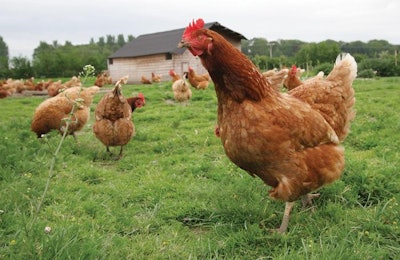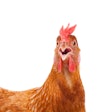
Poultry producers can expect welfare pressures to continue growing, probably at a greater pace than they have seen to date, necessitating ongoing changes to broiler and layer management.
Various welfare bodies emerged in the 19th century, growing in number in the 20th, but it has been in the 21st that interest has spread and intensified, and there are no signs that the pace of change will abate.
Welfare is a focus now not only of governments and interest groups but, increasingly, of multinational companies, and the latter will have ever-greater influence on the future of poultry welfare.
Even in societies where welfare is deemed a priority, a one-size-fits-all view remains on a far distant horizon, but the interest, and a follow-thy-neighbor approach, will see the world become ever more aligned.
For those that resist incorporating welfare demands, it is worth remembering that certain practices now standard in many markets, for example stunning pre-slaughter, were once novel.
On the near horizon
Developed-world producers are already confronting a number of challenges that may eventually spread throughout developing markets, with commitments to phase out layer cages, perhaps the most high profile. The compromise solution in Europe implemented only a few years ago – furnished cages – is increasingly unacceptable, highlighting the pace of change.
For egg producers, this will not simply be new investment, but thoroughly reviewing flock management, and where welfare is concerned, views are mixed on benefits for birds.
Interest in slower-growing birds is a similar example of how welfare attitudes vary greatly between groups, as speed of growth alone is not universally seen as among the best welfare indicators. Nevertheless, welfare-motivated consumer demand in this area continues rising and the industry must respond.
Where beak trimming is concerned, banned in some countries and regions, its prohibition could become more commonplace. Abandoning the practice may require producers to offer birds greater stimulation and alter feeding methods, and there are ongoing studies into how helping producers manage untrimmed birds. But rejection of trimming is unlikely to become universal.
According to Dr Claire Weeks, senior research fellow in animal welfare at Bristol University’s School of Veterinary Sciences, certain markets demand it, but it will remain niche in the short term.
And it may be the case that, as pressure on the practice increases, the need to beak trim diminishes. Changes at the genetics level may be the answer, as genetics companies look to develop birds less able to inflict harm.
A British Veterinary Poultry Association (BVPA) spokesperson explains: “Selective breeding has generated significant physical alterations, many of which would be regarded as welfare positive and void the need for mutilations.”
No longer an interest group preserve
The drivers of welfare are changing. Large corporations are taking a growing role not only in response to consumers, but picking up public sector responsibilities in countries favoring smaller government.
Where one major company leads, others follow. McDonald’s 2015 announcement that all its eggs in the US and Canada would come from cage-free birds was followed by others committing to do the same. This ripple effect continues.
Ignacio Blanco-Traba, senior global sustainable sourcing with McDonald’s Corp., has said that McDonald’s customers want to know more than ever how animals are reared and, being global, McDonald’s applies its welfare policies worldwide.
Retailers will also put more demands on producers. It is Europe’s retailers - not legislators - that are bringing an end to enriched cages.
Companies increasingly deem welfare a “key business issue,” says Compassion in World Farming (CIWF). More are signing up to its Business Benchmark on Farm Animal Welfare (BBFAW) - established wtih World Animal Protection and Coller Capital - designed to drive higher welfare in food business. The latest BBFAW includes 99 companies.
It will not only be the poultry industry’s clients that drive welfare, but its suppliers too. As the industry becomes increasingly standardized, genetics companies will have little interest in supplying birds that perform poorly in changed production system.
Science or no science
The role of large corporations may be a mixed blessing. On one hand, they want suppliers to succeed, offering rules, sharing best practice and support. Private assurance schemes can be highly effective, but will only lead to genuine welfare improvements if properly designed.
Ultimately, consumer-facing food businesses will align with customers’ perceptions. Despite good intentions, these perceptions may be neither good for bird welfare nor producers and, as the world becomes more interconnected, views are quickly shared across communities and geographies.
Dr. Weeks notes how social media has changed sourcing policies in the US and how this phenomenon is spreading.
“Millennials are the ones on social media, and their ideas spread very quickly. But the people driving the agenda are ill-informed. The reality is wildly different to what consumers think.”
Yet alongside the consumer welfare interpretation, there is a growing body of scientific evidence and science-based recommendations that can help to improve poultry welfare in a measurable way. As this increases, it will become ever harder to simply dismiss all welfare demands as being part of an ill-informed animal rights agenda.
According to the Universities Federation for Animal Welfare: “Science informs, motivates and facilitates advances in animal welfare by providing a strong evidence base for changing attitudes and practices, and by creating practical and effective solutions to welfare problems”.
How welfare demands shape future poultry production will depend on who controls the agenda.
Ever less a rich world concern
Welfare is often viewed as a developed world concern, unaffordable for the developing world. Yet as the developing world becomes richer, demanding more meat, its consumers will become more sophisticated. Once volumes are satisfied, consumers tend to move towards perceived quality.
But will the developing world be able to afford welfare standards with so many mouths to feed and priorities to meet?
The BVPA points out that, for much of the developing world, bigger issues for producers may include extremes of climate, natural predators and endemic diseases, and these may outweigh any welfare “benefits” from free range, for example. However, it also notes that it will be the expanding aspirational middle class with disposable income that will be likely to drive meat and egg production in some developing countries.
Standards that may appear to have little immediate local value may, in fact, offer poultry producers opportunities. Take, for example, Brazil, which, with only a small Muslim population has become the world’s largest halal chicken exporter, responding to overseas demand.
According to the Food and Agriculture Organization (FAO), a lack of welfare legislation may be keeping poultry producers out of international markets, rather than helping it succeed.
Yet change is occurring. Of the 99 companies in the latest BBFAW, 11 are from outside Europe and the USA and Canada, including from Brazil, China and Thailand. CIWF echoes that welfare standards not only allow companies to move up the value chain, but to enter new markets.
Future barrier to trade?
As welfare develops piecemeal, there is a risk of-more divergence. In practice, however, countries developing welfare codes tend to look to what others have already implemented, resulting in broadly similar standards. Looking longer term, however, the danger grows that welfare becomes a trade barrier.
Welfare trade disputes remain a long way off, but the World Trade Organization is paying attention to the area. In 2014, it rejected appealed EU ban on seal products, finding that non-trade concerns, such as welfare, can restrict trade.
Perhaps indicative of things to come is the World Organization for Animal Health (OIE)’s elaboration of welfare recommendations and guidelines. It argues that welfare is key to animal health, and has adopted 10 science-based welfare standards, including on broiler production, transport and slaughter, and is looking at laying hen standards.
That concerns are spreading cannot be denied. As Dr. Weeks points out, within Europe, welfare was a northern European issue, but is now Europe-wide and extending through trade deals. In Australia, 15 years ago, 10 percent of egg production was free range - it is now 50 percent. As consumers demand more welfare, producers must respond.
In this issue, you will also learn about:
- 6 strategies to increase retail poultry sales in 2017
- Antibiotic-free animal feed production grows worldwide
This is the fifth article in WATT Global Media’s 100-year anniversary series, which considers bird welfare. The next article in the series will explore industry structure.
















